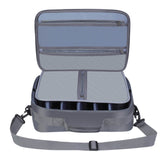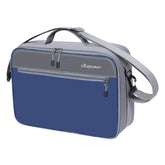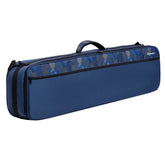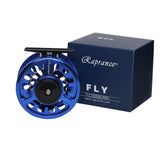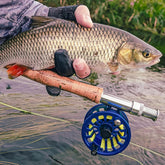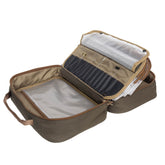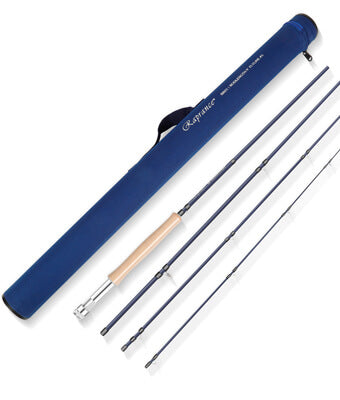Fly Line: A Comprehensive Guide to Types and Uses in Fly Fishing
Choosing the right fly line is essential for successful fly fishing. Different types of fly lines, such as sinking, weight forward, and double taper, each offer unique advantages that can enhance my fishing experience. Understanding these options allows me to select the best line for my specific needs and conditions.

When considering fly lines, stability and durability are critical factors. A weight forward fly line, for example, provides an excellent balance for casting further distances, while a double taper line offers versatility for delicate presentations. The right taper can significantly impact how I drift my fly and the overall effectiveness of my fishing technique.
Sinking fly lines and shooting taper lines serve distinct purposes as well. Sinking lines are designed to help me reach deeper waters where fish might be feeding, while shooting taper lines allow for quick and efficient casting, especially in windy conditions. By mastering these fly line types, I can adapt to various fishing scenarios and improve my chances of success.
Fly Line Fundamentals
Understanding fly lines is essential for successful fly fishing. The right choice enhances casting efficiency and improves the overall fishing experience. Key aspects include types of fly lines, line weight, and taper designs.
Types of Fly Lines
There are several types of fly lines, each designed for specific conditions and techniques. The most common include:
- Floating Line: This line stays on the surface, ideal for dry flies and topwater presentations.
- Sinking Line: Designed to sink, it helps in retrieving flies from deeper waters, suitable for nymphs and streamers.
- Double Taper Line: This line features a tapered design at both ends, allowing for easy roll casts and delicate presentations.
- Weight Forward Line: This has a thicker front section, providing better control and distance for casting.
Choosing the right line type depends on the water conditions and target species.
Understanding Line Weight
Line weight refers to the thickness of the fishing line. It is critical as it determines the line's density and buoyancy. The American Fishing Tackle Manufacturers Association (AFTMA) established a standardized system, with weights ranging from 1 to 14.
Common line weights include:
- Lightweight (1-3): Best for small fish and delicate presentations.
- Medium (4-6): Versatile for various applications, suitable for trout and bass.
- Heavyweight (7-14): Designed for larger species in powerful currents.
Matching line weight to rod and reel specifications ensures optimal casting performance.
Fly Line Taper Designs
Fly line tapers significantly affect casting style and presentation. Taper designs include:
- Weight Forward: The front is heavier, allowing for longer casts with less effort. Excellent for distance and larger flies.
- Double Taper: Both ends are tapered, effective for close-range casting, offering smooth roll casts.
- Shooting Taper: Combines a slender front taper with a thicker running line for quick line shoots and distance casts.
Understanding the implications of each taper design will help me make informed decisions on which line to use in various fishing scenarios.
Specialized Fly Line Features
Understanding the various specialized features of fly lines can enhance precision and efficiency in casting. These features significantly impact the way I present my fly to fish, allowing for better adaptability to changing conditions.
Weight Forward Fly Lines
Weight forward fly lines are designed with a heavier front section. This design enables improved casting distance and precision, particularly in windy conditions. The front taper is thicker, allowing for greater control during delivery.
Advantages include the ability to cast larger flies and maintain accuracy at longer distances. These lines work well for both freshwater and saltwater fishing. The streamlined profile also aids in delicate presentations when approaching wary fish.
When using weight forward lines, I can focus on making quick, effective casts without sacrificing performance.
Double Taper Fly Lines
Double taper fly lines offer a balanced design that is perfect for delicate presentations. The line is thicker in the center and tapers off at both ends, allowing for versatility and smooth roll casts.
One key advantage is the ability to easily reverse the line when one end becomes worn. This feature is especially useful for anglers who favor precision over distance.
Double taper lines excel in small streams and when targeting species that require a subtle approach. They permit soft landings, crucial for spooking fish.
Being able to switch ends enhances the longevity and usability of these lines.
Sinking and Sink Tip Lines
Sinking and sink tip lines are essential for fishing in deeper waters. These lines allow my flies to reach specific depths efficiently. Sinking lines are categorized by their sink rates, ranging from slow to fast, enabling flexibility in targeting different species.
Sink tip lines combine a floating section with a sinking tip. This design is beneficial when I need to maintain surface control while also getting the fly just below the surface.
Both types are fantastic for fishing nymphs or streamers in rivers and lakes. They help me cover various depths, increasing my chances of a successful catch.
Choosing the right sinking option depends on the water depth and the fish I am targeting.
Fly Line Selection and Application
Selecting the appropriate fly line is essential for effective casting and achieving success in various fishing environments. Understanding the specific requirements of different fish species and water types helps in choosing the right line.
Choosing the Right Line for Rivers and Streams
When fly fishing in rivers and streams, I prioritize lines that match the water's speed and type. For fast-moving water, a weight forward line is ideal due to its ability to load quickly and deliver casts with precision. Conversely, for slower streams, a double taper line can provide more delicate presentations, especially when using dry flies or nymphs.
For small streams, the lighter the line, the better it blends with the surroundings. Using 3 or 4-weight lines can minimize spooking fish. If targeting larger species like trout or even salmon, I might prefer a stronger, heavier line to handle the challenging conditions.
Optimal Lines for Targeting Specific Fish
The choice of fly line significantly influences my success with specific fish species. For trout, floating lines often work best, especially when using dry flies or light small streamers. When fishing for salmon, I tend to lean toward a sinking line, which allows me to reach the depths where these fish are located.
For species like tarpon or tuna, I utilize shooting taper lines due to their capacity for long-distance casting. These lines have minimal drag and can shoot the fly far with less effort. Matching the line to the behavioral and habitat preferences of the fish is crucial for successful outcomes.
Techniques for Mending and Long-Distance Casting
Mending is vital for achieving a natural drift, especially when fishing nymphs. I focus on keeping the line off the water to prevent drag. By lifting and repositioning my line, it allows the fly to drift freely and appear more enticing to the fish.
For long-distance casting, I emphasize using a shooting taper line. This design allows for quicker line speed during the cast. Techniques such as double hauling increase the casting distance effectively. I find that practicing these methods consistently enhances my accuracy and distance, which is especially important in open waters targeting large species like tuna.
Fly Line Brands and Product Lines

In the world of fly fishing, I’ve discovered a variety of brands that offer specialized fly lines catering to different techniques and preferences. Each manufacturer has its unique strengths and product lines, which play a crucial role in a successful fishing experience.
High-Quality Fly Line Manufacturers
-
Rio: Known for its innovative designs, Rio offers a range of fly lines including the Outbound Short and Streamer Max. These lines are particularly valued for their performance in various conditions.
-
Airflo: This brand is recognized for its durable materials and affordability. The Airflo lines often feature a distinctive shooting taper design, providing excellent accuracy and distance.
-
Cortland: With a long-standing reputation, Cortland’s fly lines are engineered for consistent performance. The Cortland 444 series represents quality at a competitive price point.
-
Scientific Anglers: Their MPX lines are designed for versatility and smooth casting. The slickness and coating technology enhance line performance in diverse environments.
-
Orvis: Orvis provides premium fly lines that focus on user-friendly characteristics. Their products are ideal for both novice and expert anglers.
-
Royal Wulff: Specializing in double taper lines, Royal Wulff is ideal for delicate presentations, particularly in spring creeks and still waters.
Comparing Price and Performance
When comparing fly line brands, understanding the balance between price and performance is essential.
-
Mid-Range Options: Lines from Cortland and Airflo typically fall into a moderate price range without sacrificing quality. They offer reliable performance suitable for most anglers.
-
Premium Choices: Brands like Rio and Scientific Anglers offer higher-end products. Their prices reflect advanced technologies that enhance casting and durability.
-
Budget-Friendly Lines: Options like those from Orvis cater to beginners looking for affordable, reliable lines.
By evaluating these factors and experimenting with different brands, I can find the line that best suits my fishing style and conditions.

